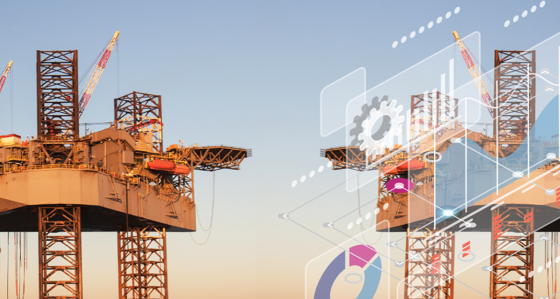Approaching your enterprise resource planning upgrade as a business transformation is essential for maximising value. In this article we set out the three key steps to achieving success: concept optimisation, value engineering and disciplined execution.
Companies upgrading their enterprise resource planning (ERP) solutions often describe the experience in similar words: frustrating, lengthy, costly, and disappointing. Too many ERP upgrade projects return little value, or suffer time and cost overruns, or deliver outcomes so inconclusive that no-one can be sure if they delivered value or not.
A major reason for these failures is that ERP upgrades are approached as an IT project, designed to deliver technical outcomes. Indeed, SAP are ending support for many of their old products in 2027. But any software change is in fact, a business transformation. And like any business transformation, ERP requires a value perspective right from the start. Where does the business value reside? How can we measure that value? What do we need to do to realise that value?
These are questions to ask before embarking on an ERP upgrade. By taking a value-based approach, companies can focus on the business case and see benefits accrue as they go—instead of waiting until the end (we will address the question of how to get value retrospectively after an ERP technical upgrade separately).
There are three main steps to success.
1. Concept optimisation
First, identify the drivers of business value. Focus on where ERP enables of value in the broader business and the ways in which the ERP can optimize that value. Consider the potential returns and measurable outcomes before embarking on the upgrade process. Generally, there are three levers that drive value from next-gen ERP:
Standardisation
An ERP upgrade is an opportunity to select and use standard processes and data throughout the business. This harmonisation eliminates unnecessary complexity which in turn reduces system development cost and effort, reducing the upgrade risk. Standardisation also unlocks value through business cost efficiencies, enabling resource sharing, consolidation, follow-the-sun operations etc. Rather than have operations in assets around the world, standardisation allows centres of expertise to be established reducing cost and improving performance. Depending on your starting point, standardisation can account for one-third of the value an ERP transformation can bring.
New capabilities
SAP S/4HANA offers an array of advanced features and tools, including ML and AI that can help companies optimise the way they work. To unlock value from these capabilities requires a deep understanding of the technology and how the company works, however innovation can drive up to half the overall value.
Out-of-the box functionality
Companies will often customise their ERP solutions when out-of-the-box features are perceived not to address business needs sufficiently. But customisation adds complexity and often makes for future upgrades more expensive, difficult, and time-consuming. SAP S/4HANA makes a stronger case for sticking with out-of-the-box capabilities creating the remaining value in an ERP transformation.
Identify the value drivers and establish benchmarks to measure benefit from specific areas of improvement. Process and data discovery tools such as SAP Signavio and SNP Crystalbridge help you determine current performance and establish baseline benchmarks. External benchmarks can help determine target performance levels. Engage executives responsible for delivery of benefits in development of the business to champion the value of the ERP upgrade.
2. Value engineering
Prioritise the areas where ERP can generate observable, quantifiable returns.
Build a foundation for value creation: deploy the ERP system in a modular and flexible manner to keep the core lean while enhancing and adding new capabilities where needed. Ensure that ERP aligns with your data and digital architecture. This flexibility allows you to adapt to changing business requirements and future growth.
Deliver agile innovations while transforming the core: aim to generate value quickly and visibly by delivering incremental improvements and innovations. This approach generates buy-in and helps fund the ERP upgrade journey. It is crucial to balance ongoing enhancements with the core transformation.
Rarely do all the benefits occur on day one after go-live, but ERP teams are under pressure to cut costs and move to the next task in hand. To maximise value, business executives need to monitor value delivery and drive interventions such as training or design changes so that planned benefits are realised. Remember the goal of the project is value creation, software deployment is just one enabling step of many.
3. Disciplined execution
Making all this work requires transparency, strong governance, and robust change management. Companies that effectively partner with their SI vendors, can make course corrections in an agile way, and foster effective collaboration between business and IT teams. They keep team members focused on value and rein in the complexity and scope that often hinder its creation.
Ensure thorough testing and change management. The value case will be quickly destroyed if you are unable to perform basic business functions such as goods receiving, or supplier payment. However, you cannot take it for granted that everything will work, and people will know how to use it, let alone realise benefit from it, without focussed effort.
Through effective governance, companies can lower the cost of the transformation typically by one-third.
To discuss this topic further, get in touch with Andrew Mercer.
Related Case Studies

Collaborating globally to future proof Australia’s water resources
How do you effectively manage the ever-evolving supply and demand challenges of water resources?
Read more
Rescuing leakage performance for a water company
How do you recover leakage performance after two extreme weather events?
Read more
Navigating the shifting bioresources landscape
Helping a major UK water and sewerage company navigate the shifting bioresources landscape.
Read more
Reducing OPEX by 30% and building new capability for the future at a UK B2B water retailer
How do you move a business to profitability and drive continuous improvement…at the same time?
Read more

